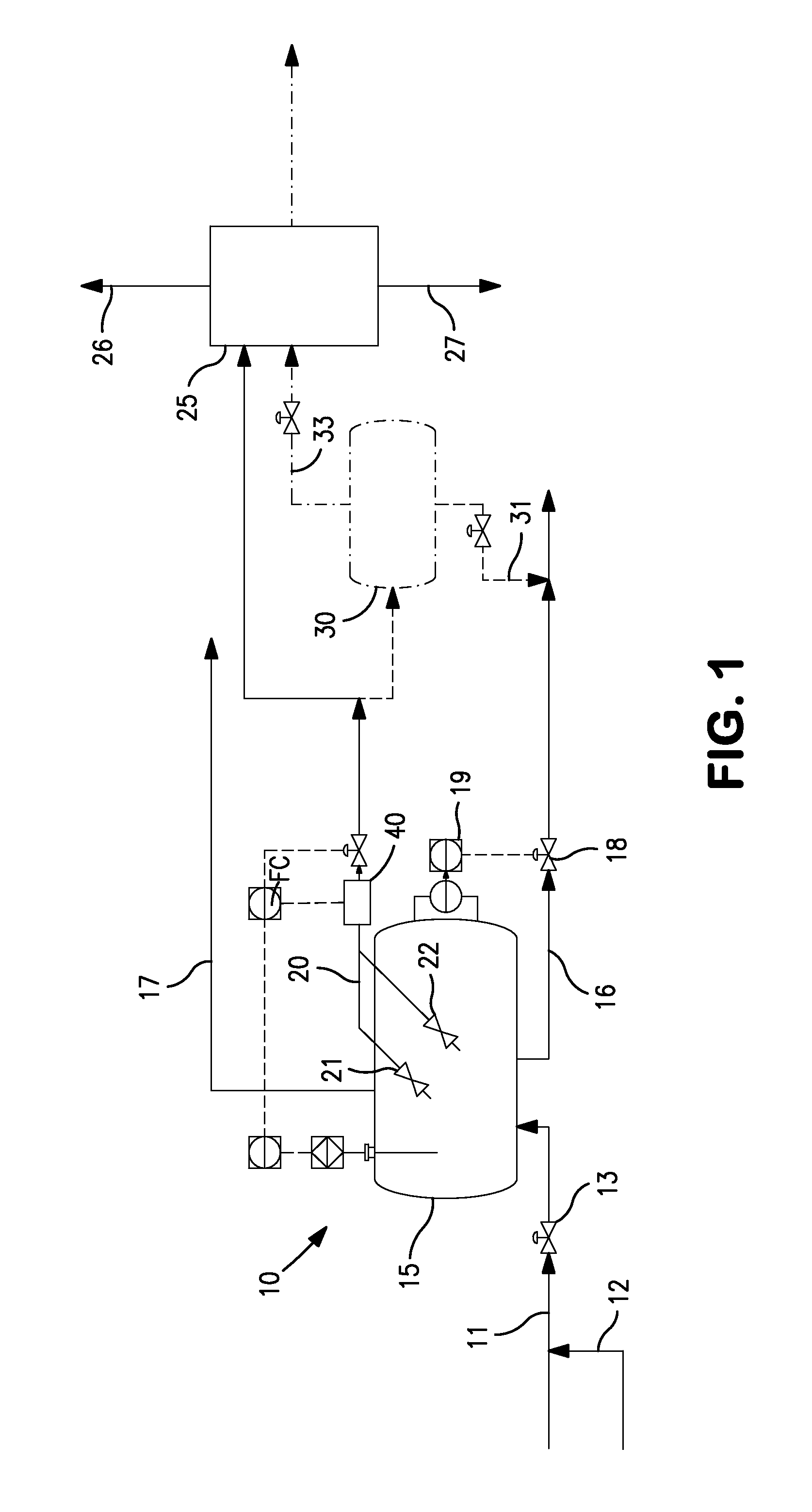Separator for desalting petroleum crude oils having rag layer withdrawal
a technology of petroleum crude oil and separation device, which is applied in the direction of hydrocarbon oil refining control/regulation, hydrocarbon oil treatment, dewatering/demulsification regulation/control, etc., can solve the problems of low brine phase, too much brine, and special difficulties of solids-stabilized emulsions, etc., to achieve the effect of minimal downtim
- Summary
- Abstract
- Description
- Claims
- Application Information
AI Technical Summary
Benefits of technology
Problems solved by technology
Method used
Image
Examples
operational example
[0041]An experimental refinery field test was carried out to test the ability to control the volume of the emulsion layer in the desalter by continuous withdrawal, to understand how the emulsion layer properties (solids and oil content) change when continuous withdrawal of the emulsion layer is in operation and to quantify the growth rate of the emulsion layer under experimental conditions. Test results demonstrated that emulsion layer was consistently withdrawn at an estimated flow rate of 191 to 207 m3 / day (1.2 to 1.3 KBD) and the emulsion layer height was reduced from 150 cm. to about 90 cm (from about 5 ft. to 3 ft.) in approx. 36 hours. The emulsion layer growth rate was estimated to be 40 m3 / day (250 BPD), therefore the required withdrawal rate to maintain emulsion layer volume is likely to be lower than the tested rate for that particular commercial desalter. The emulsion growth rate after withdrawal was terminated brought the emulsion layer back to the original level after 6...
PUM
| Property | Measurement | Unit |
|---|---|---|
| temperatures | aaaaa | aaaaa |
| thickness | aaaaa | aaaaa |
| particle size | aaaaa | aaaaa |
Abstract
Description
Claims
Application Information
 Login to View More
Login to View More - R&D
- Intellectual Property
- Life Sciences
- Materials
- Tech Scout
- Unparalleled Data Quality
- Higher Quality Content
- 60% Fewer Hallucinations
Browse by: Latest US Patents, China's latest patents, Technical Efficacy Thesaurus, Application Domain, Technology Topic, Popular Technical Reports.
© 2025 PatSnap. All rights reserved.Legal|Privacy policy|Modern Slavery Act Transparency Statement|Sitemap|About US| Contact US: help@patsnap.com



